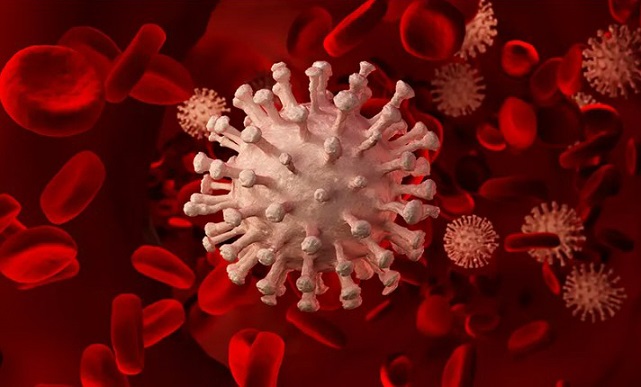Nikhil Prasad Fact checked by:Thailand Medical News Team Aug 31, 2025 4 months, 6 days, 20 hours, 52 minutes ago
Medical News: Researchers from the Department of Internal Medicine I and the Institute of Clinical Chemistry and Laboratory Medicine at the University Hospital Regensburg, Germany, have made an important discovery. They found that people with COVID-19-related sepsis have unique patterns of certain blood fats called lysophosphatidylcholines (LPCs), which clearly set them apart from patients who develop sepsis from other infections.
 Unique Blood Fat Markers Separate COVID-19 Sepsis from Other Sepsis
Unique Blood Fat Markers Separate COVID-19 Sepsis from Other Sepsis
Sepsis, a dangerous and often life-threatening reaction of the body to infection, has always been difficult to diagnose and treat quickly. While low levels of LPC in the blood are already known to be linked with sepsis, this
Medical News report reveals that COVID-19 sepsis behaves differently, with a surprising pattern of LPC changes.
What the Researchers Found
The study examined 157 patients suffering from serious infections such as systemic inflammatory response syndrome (SIRS), sepsis, or septic shock. Among them, 24 had COVID-19. The team measured 13 types of LPC in blood samples using advanced mass spectrometry.
The results showed that patients with COVID-19 sepsis had significantly higher levels of ten different LPC types and overall LPC concentration compared to sepsis patients without the virus. This was remarkable because both groups had illnesses of similar severity.
Even more interesting, COVID-19 patients had lower levels of key inflammatory markers such as C-reactive protein (CRP), procalcitonin, and interleukin-6 (IL-6), but higher cholesterol and liver enzyme levels compared to non-COVID sepsis patients. This suggests that COVID-19 triggers a very different metabolic response in the body, even during life-threatening sepsis.
Why This Matters
The differences in LPC levels could help doctors quickly tell whether a critically ill patient’s sepsis is caused by COVID-19 or another infection. This is vital because treatment strategies might differ, and early recognition can save lives.
The researchers also found that LPCs strongly correlated with cholesterol levels and inflammation markers. In fact, higher LPC levels in COVID-19 patients may be linked to the lower inflammation seen in their blood compared to other sepsis patients. This highlights how the virus reshapes metabolism in ways other infections do not.
Looking Ahead
While LPC levels alone may not predict who will survive sepsis, the discovery of these distinct “lipid signatures” opens doors to new diagnostic tools and therapies. By targeting lipid metabolism, scientists may develop more precise treatments for COVID-19 sepsis in the future.
Conclusion
This study is a major step in understanding how COVID-19 uniquely alters the body during sepsis. Unlike other infections that drastically reduce LPC levels, COVID-19 maintains higher LPC concentrations, signaling a different type of immune
and metabolic reaction. Recognizing these patterns could help doctors improve diagnosis, tailor treatments, and perhaps even design new drugs for patients battling severe COVID-19 complications. For now, the clear message is that COVID-19 sepsis is not the same as other sepsis, and blood fats like LPC could be the key to telling the difference.
The study findings were published in the peer reviewed journal: Biomedicines.
https://www.mdpi.com/2227-9059/13/9/2110
For the latest COVID-19 News, keep on logging to Thailand
Medical News.
Read Also:
https://www.thailandmedical.news/news/is-long-covid-nothing-more-than-low-grade-sepsis-involving-secondary-opportunistic-pathogens
https://www.thailandmedical.news/news/programmed-cell-death-markers-and-sepsis-in-covid-19
https://www.thailandmedical.news/news/viral-sepsis-challenges-and-new-insights
